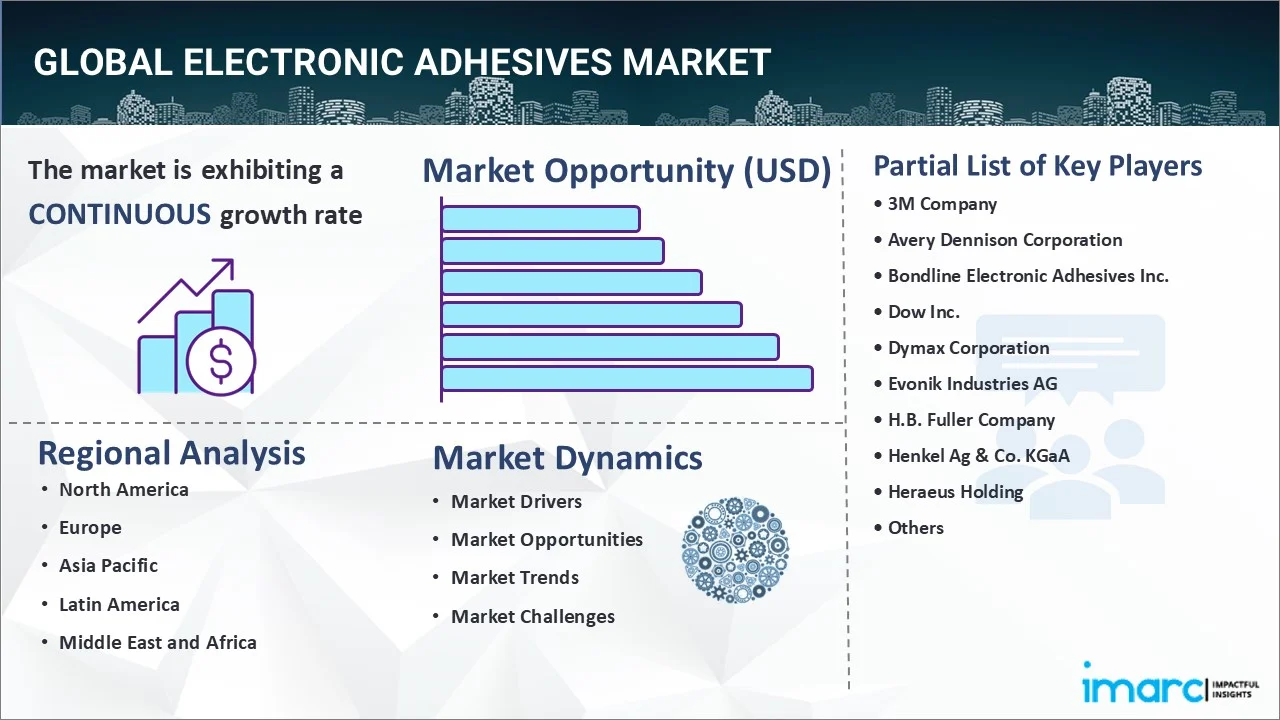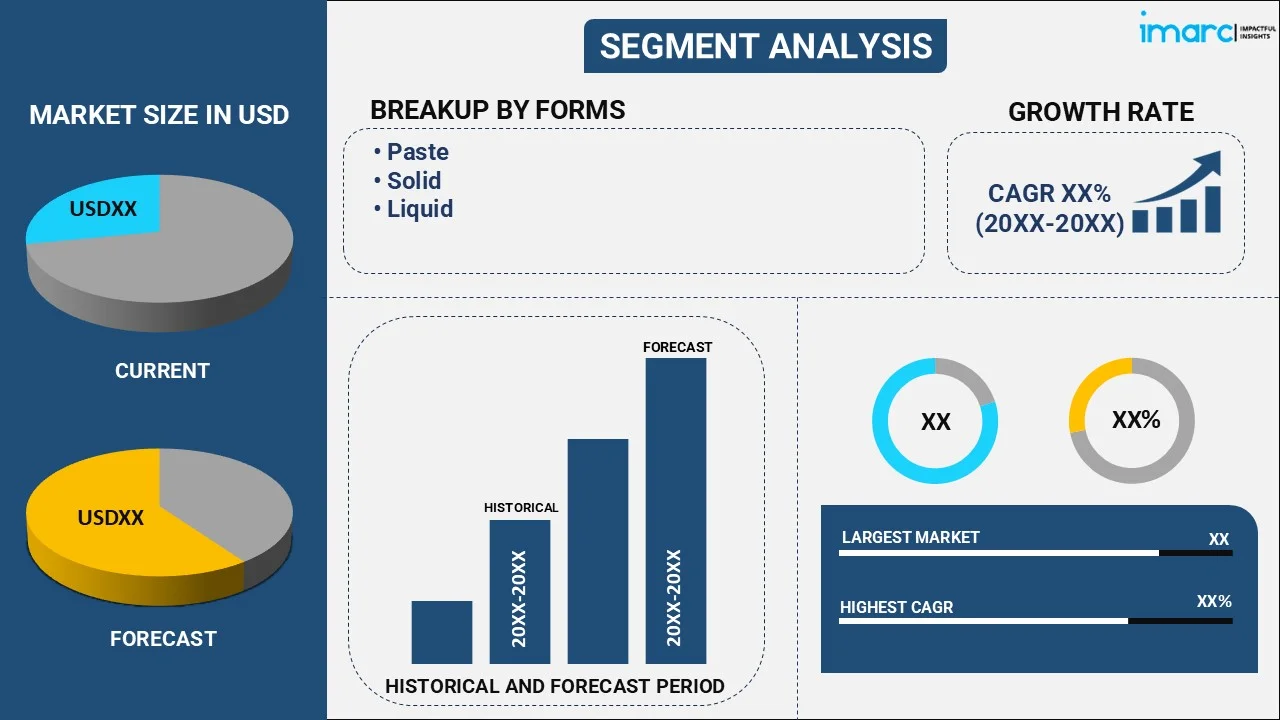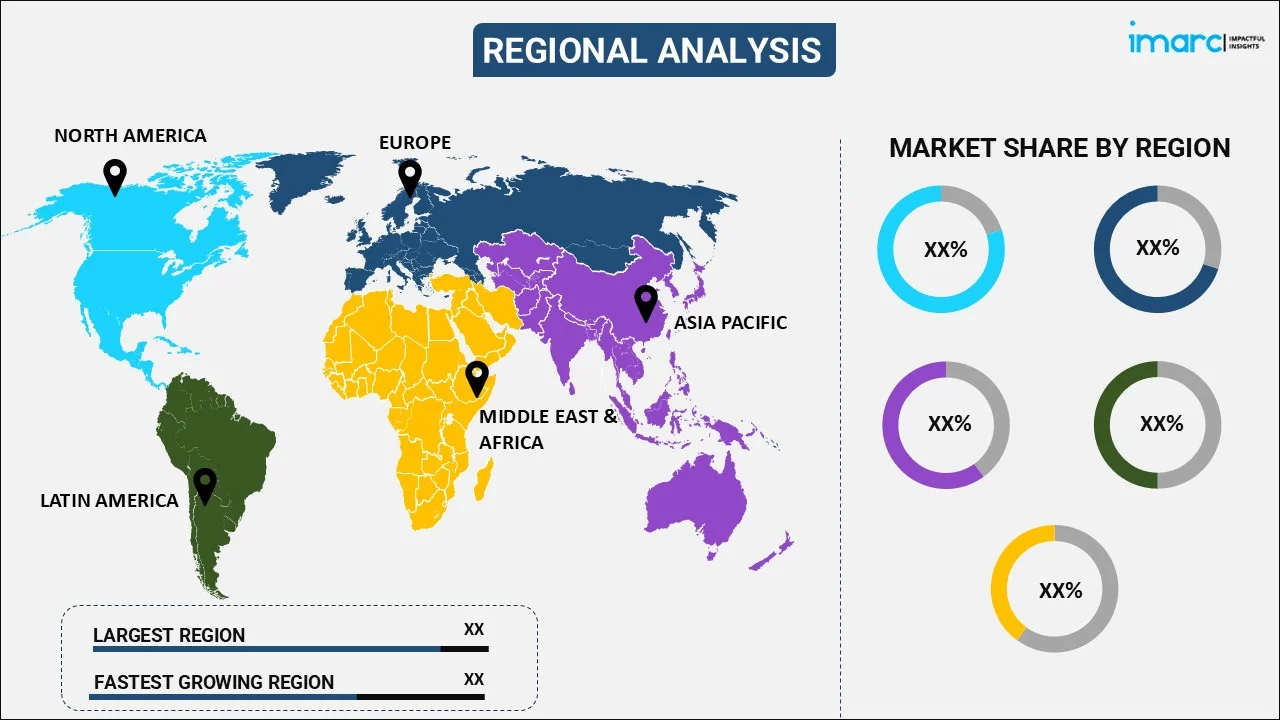
Electronic Adhesives Market Report by Form (Paste, Solid, Liquid), Product Type (Electrically Conductive Adhesives, Thermally Conductive Adhesives, and Others), Resin Type (Epoxy, Silicone, Acrylics, PU, and Others), Application (Consumer Electronics, Computers and Servers, Industrial, Medical, Automotive, Communication, and Others), and Region 2025-2033
Market Overview:
The global electronic adhesives market size reached USD 5.8 Billion in 2024. Looking forward, IMARC Group expects the market to reach USD 9.2 Billion by 2033, exhibiting a growth rate (CAGR) of 5.2% during 2025-2033. The growing adoption of electric vehicles (EVs) that relies on electronics for battery systems, sensors, and connectivity solutions, rising construction of renewable energy systems, such as solar panels and wind turbines, and advancements in adhesive technology are some of the factors impelling the market growth.
|
Report Attribute
|
Key Statistics
|
|---|---|
|
Base Year
|
2024
|
|
Forecast Years
|
2025-2033
|
|
Historical Years
|
2019-2024
|
|
Market Size in 2024
|
USD 5.8 Billion |
|
Market Forecast in 2033
|
USD 9.2 Billion |
| Market Growth Rate 2025-2033 | 5.2% |
Electronic adhesives are substances used for bonding and holding electrical components together. They provide a strong bond during electronics assembly while protecting components against potential damage. They are widely used in surface-mounting, assembling substrates on printed circuit boards (PCBs) and semiconductors, potting and encapsulations, and manufacturing and assembly of electronic circuits and products. Electronic adhesives are manufactured using polyurethanes, cyanoacrylate, polysulfide, silicones, and epoxies. They help to protect the circuit board from harmful environmental factors, including moisture, and corrosion. They improve the performance by providing excellent protection and layered security. As a result, electronic adhesives have applications across the consumer electronics, communications, industrial, medical, and automotive industries.

Electronic Adhesives Market Trends:
Rise of Electric Vehicles (EVs) and Automotive Electronics
The shift of the automotive industry toward electric vehicles (EVs), which relies on electronics for battery systems, sensors, and connectivity solutions, is contributing to the electronic adhesives market growth. Adhesives are vital for protecting and bonding components like battery cells and ensuring the reliability of automotive electronics under extreme conditions, such as high temperatures and vibrations. Car manufacturers are continuously adopting more advanced driver-assistance systems (ADAS) and autonomous driving technologies, which is driving the need for electronic adhesives that offer long-term durability and efficiency. In 2023, Bostik unveiled its latest Thermal Conductive Adhesives (TCA) collection at the India Battery Show, created through a partnership with Polytec PT. The new TCAs improve EV battery design by tackling thermal management issues, dispersing heat and dampening vibrations to boost battery performance and safety.
Growing Focus on Renewable Energy Systems
Renewable energy systems, such as solar panels and wind turbines, depend heavily on reliable electronic components that can withstand harsh environmental conditions like extreme temperatures, humidity, and ultraviolet (UV) exposure. Adhesives are used in the assembly of photovoltaic cells, power converters, inverters, and battery storage systems, ensuring not only durability but also electrical insulation and thermal management. Many governing bodies and companies are investing in clean energy solutions to meet sustainability goals and reduce carbon emissions, which is driving the demand for advanced electronic adhesives capable of enhancing the performance, longevity, and reliability of renewable energy infrastructure. In 2024, Panacol and Hönle UV Technology launched adhesive and UV curing systems specifically created for flexible electronics and photovoltaic uses. These UV-cured adhesives provide resistance to the environment, quick curing, and flexibility, which makes them suitable for applications in solar cells, touch sensors, and wearables. The systems allow for manufacturing processes that are efficient and cost-effective.
Advancements in Adhesive Technology
New formulations are being developed to meet the changing needs of industries like electronics and automotive. Adhesives with improved thermal conductivity, electrical insulation, and resistance to environmental factors are becoming essential. These advancements are allowing manufacturers to meet more stringent performance requirements, such as withstanding extreme temperatures and ensuring the long-term reliability of electronic components. As technology evolves, adhesives are being engineered to bond a wider range of materials, including those used in flexible and wearable electronics, expanding their application. In 2023, Chemence introduced the KURA-LOW™ adhesive technology platform specifically created for assembling electronic devices. This technology combined UV and thermal curing at reduced temperatures, improving bonding effectiveness and maintaining device reliability for camera modules, sensors, and OLED displays. The technology also offered stability at room temperature and sustainability advantages by decreasing the requirement for high curing temperatures.
Key Market Segmentation:
IMARC Group provides an analysis of the key trends in each segment of the global electronic adhesives market, along with forecasts at the global, regional, and country levels from 2025-2033. Our report has categorized the market based on form, product type, resin type, and application.
Form Insights:

- Paste
- Solid
- Liquid
The report has provided a detailed breakup and analysis of the electronic adhesives market based on the form. This includes paste, solid, and liquid. According to the report, liquid represented the largest segment.
Product Type Insights:
- Electrically Conductive Adhesives
- Thermally Conductive Adhesives
- Others
A detailed breakup and analysis of the electronic adhesives market based on the product type has also been provided in the report. This includes electrically and thermally conductive adhesives and others. According to the report, electrically conductive adhesives accounted for the largest market share.
Resin Type Insights:
- Epoxy
- Silicone
- Acrylics
- PU
- Others
The report has provided a detailed breakup and analysis of the electronic adhesives market based on the resin type. This includes epoxy, silicone, acrylics, PU and others. According to the report, epoxy represented the largest segment.
Application Insights:
- Consumer Electronics
- Computers and Servers
- Industrial
- Medical
- Automotive
- Communication
- Others
The report has provided a detailed breakup and analysis of the electronic adhesives market based on the application. This includes consumer electronics, computers and servers, industrial, medical, automotive, communication, and others. According to the report, communication represented the largest segment.
Regional Insights:

- North America
- United States
- Canada
- Asia Pacific
- China
- Japan
- India
- South Korea
- Australia
- Indonesia
- Others
- Europe
- Germany
- France
- United Kingdom
- Italy
- Spain
- Russia
- Others
- Latin America
- Brazil
- Mexico
- Others
- Middle East and Africa
The report has also provided a comprehensive analysis of all the major regional markets that include North America (the United States and Canada); Asia Pacific (China, Japan, India, South Korea, Australia, Indonesia, and others); Europe (Germany, France, the United Kingdom, Italy, Spain, Russia, and others); Latin America (Brazil, Mexico, and others); and Middle East and Africa. According to the report, Asia Pacific holds the biggest electronic adhesives market share. Some of the factors driving the Asia Pacific electronic adhesives market included rising expenditure capacities of consumers, technological advancements, an increasing demand for consumer electronics, and extensive research and development (R&D) activities.
Competitive Landscape:
The report has also provided a comprehensive analysis of the competitive landscape in the global electronic adhesives market. Detailed profiles of all major companies have also been provided. Some of the companies covered include:
- 3M Company
- Avery Dennison Corporation
- Bondline Electronic Adhesives Inc.
- Dow Inc.
- Dymax Corporation
- Evonik Industries AG
- H.B. Fuller Company
- Henkel Ag & Co. KGaA
- Heraeus Holding
- Huntsman Corporation
- Master Bond Inc.
- Permabond LLC
Kindly note that this only represents a partial list of companies, and the complete list has been provided in the report.
Electronic Adhesives Market News:
- October 2024: Master Bond introduced the EP21ARHTND-2, a two-part epoxy adhesive that acts as an electrical insulator and offers strong acid resistance. The adhesive withstood exposure to chemicals like sulfuric and hydrochloric acid and passed damp heat reliability testing.
- May 2024: H.B. Fuller announced its acquisition of ND Industries, a US-based specialty adhesives company known for fastener locking and sealing solutions in industries like automotive and electronics. This acquisition strengthens H.B. Fuller's product portfolio, adding ND's Vibra-Tite® brand to its adhesive technologies, and aligns with its growth strategy in high-margin segments.
- June 2023: Henkel initiated construction on a new adhesive production plant in Yantai, China, with an investment of EUR 120 million. The Kunpeng facility was designed to manufacture adhesives for sectors such as electronics, automotive, and aerospace, and was set to be powered by 100% renewable electricity while incorporating advanced sustainability features.
Report Coverage:
| Report Features | Details |
|---|---|
| Base Year of the Analysis | 2024 |
| Historical Period | 2019-2024 |
| Forecast Period | 2025-2033 |
| Units | Billion USD |
| Segment Coverage | Form, Product Type, Resin Type, Application, Region |
| Region Covered | Asia Pacific, Europe, North America, Latin America, Middle East and Africa |
| Countries Covered | United States, Canada, Germany, France, United Kingdom, Italy, Spain, Russia, China, Japan, India, South Korea, Australia, Indonesia, Brazil, Mexico |
| Companies Covered | 3M Company, Avery Dennison Corporation, Bondline Electronic Adhesives Inc., Dow Inc., Dymax Corporation, Evonik Industries AG, H.B. Fuller Company, Henkel Ag & Co. KGaA, Heraeus Holding, Huntsman Corporation, Master Bond Inc. Permabond LLC, etc. |
| Customization Scope | 10% Free Customization |
| Post-Sale Analyst Support | 10-12 Weeks |
| Delivery Format | PDF and Excel through Email (We can also provide the editable version of the report in PPT/Word format on special request) |
Key Questions Answered in This Report:
- How has the global electronic adhesives market performed so far and how will it perform in the coming years?
- What are the drivers, restraints, and opportunities in the global electronic adhesives market?
- What are the key regional markets?
- Which countries represent the most attractive electronic adhesives markets?
- What is the breakup of the market based on the form?
- What is the breakup of the market based on the product type?
- What is the breakup of the market based on the resin type?
- What is the breakup of the market based on the application?
- What is the competitive structure of the global electronic adhesives market?
- Who are the key players/companies in the global electronic adhesives market?
Key Benefits for Stakeholders:
- IMARC’s report offers a comprehensive quantitative analysis of various market segments, historical and current market trends, market forecasts, and dynamics of the electronic adhesives market from 2019-2033.
- The research study provides the latest information on the market drivers, challenges, and opportunities in the global electronic adhesives market.
- The study maps the leading as well as the fastest growing regional markets. It further enables stakeholders to identify the key country-level markets within each region.
- Porter's five forces analysis assist stakeholders in assessing the impact of new entrants, competitive rivalry, supplier power, buyer power, and the threat of substitution. It helps stakeholders to analyze the level of competition within the electronic adhesives industry and its attractiveness.
- Competitive landscape allows stakeholders to understand their competitive environment and provides an insight into the current positions of key players in the market.
Need more help?
- Speak to our experienced analysts for insights on the current market scenarios.
- Include additional segments and countries to customize the report as per your requirement.
- Gain an unparalleled competitive advantage in your domain by understanding how to utilize the report and positively impacting your operations and revenue.
- For further assistance, please connect with our analysts.
 Request Customization
Request Customization
 Speak to an Analyst
Speak to an Analyst
 Request Brochure
Request Brochure
 Inquire Before Buying
Inquire Before Buying




.webp)




.webp)












